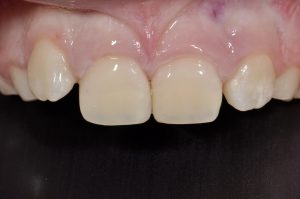A: Back in the day, anything and everything proposed by a patient was doable and possible. If they wanted to crown every tooth in their mouth for no other reason than the color bothered them a bit we would do it. There was no thought about the conservation of precious tooth structure. There was no thought about whether this would last a month, a year or a decade. They wanted to look good and we wanted to make them look good. Overnight.
They looked great. Not. Piano key white doesn’t really look good on everyone, and nobody knew the little secret that Chiclets don’t really look like teeth. More concerning was the massive amounts of tooth structure that were removed with no regard for future function or longevity.
These days, the buzz words are ethical esthetics. Remove only what enamel you absolutely need by getting the teeth in a better position first to minimize the need to touch the teeth. This not only will increase the chance the patient has chompers to the ripe age of 96, but also feature stronger cement bond strengths (cements bond better to enamel than to dentin, in the inner layers of the teeth) for improved performance and retention over time.
The economic downturn has affected not only the demand for traditional porcelain cosmetic dentistry, but has forced it to evolve in newer, more dentist-dependent precision-and-skill-driven ways. Porcelain veneers are still a big part of my everyday practice, but also now more and more dentists are asking to learn the intricate layering and artistic process behind building composite veneer using a palate of translucencies, opacities and tints, directly on the patient’s teeth to mimic nature.
